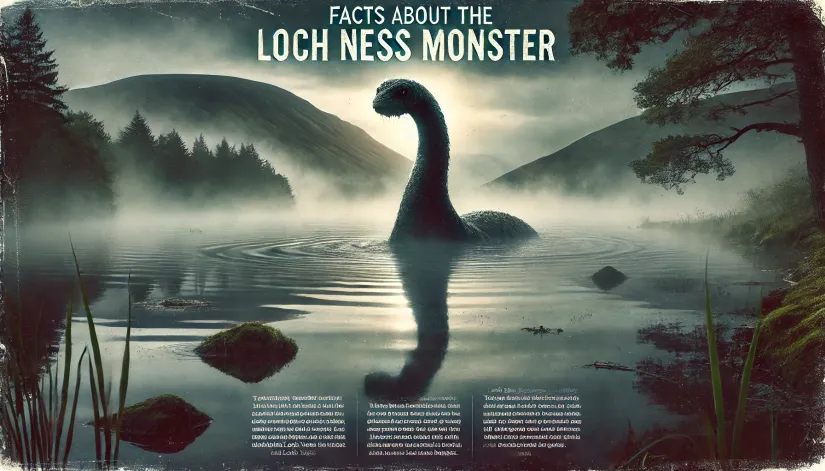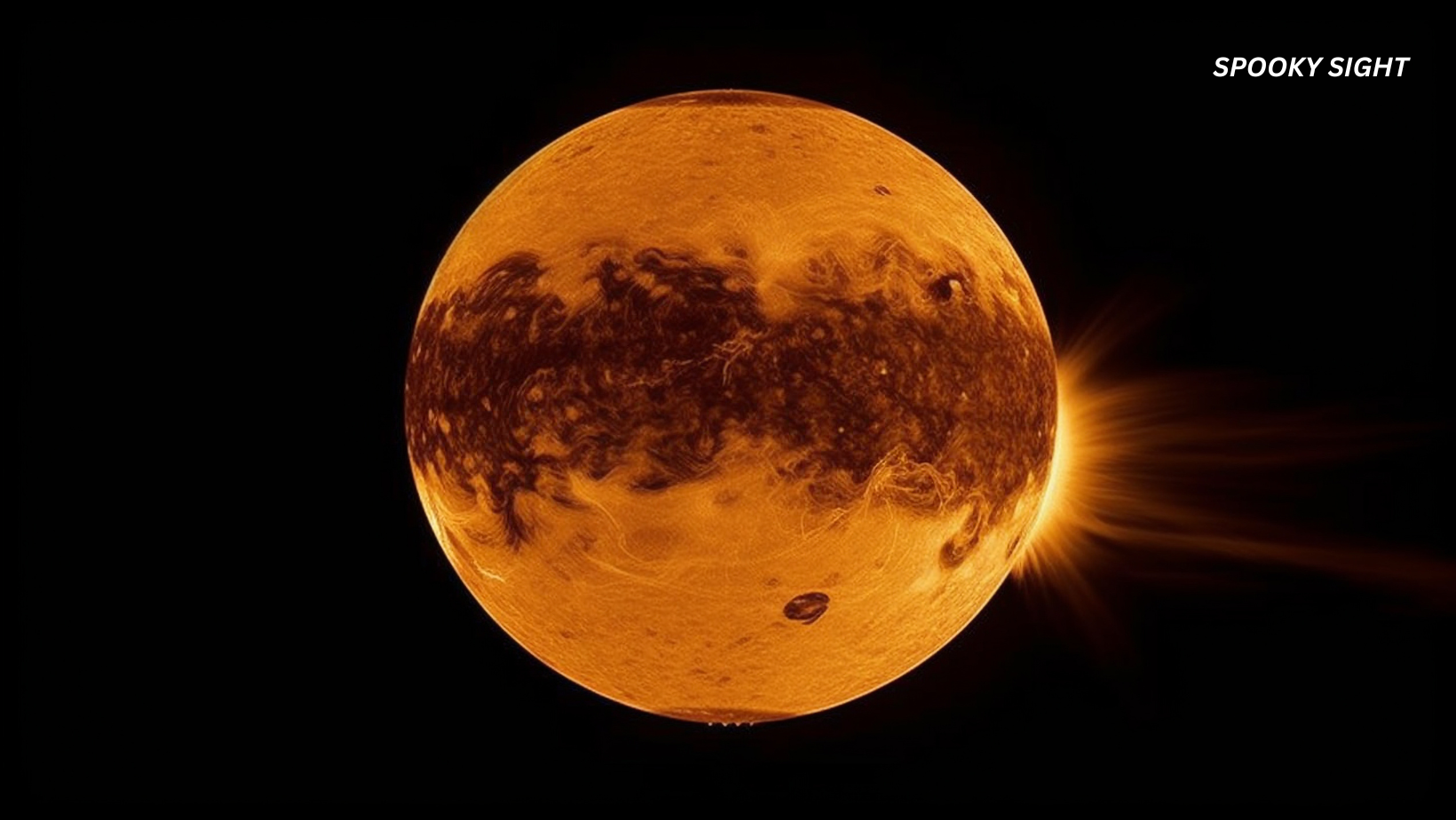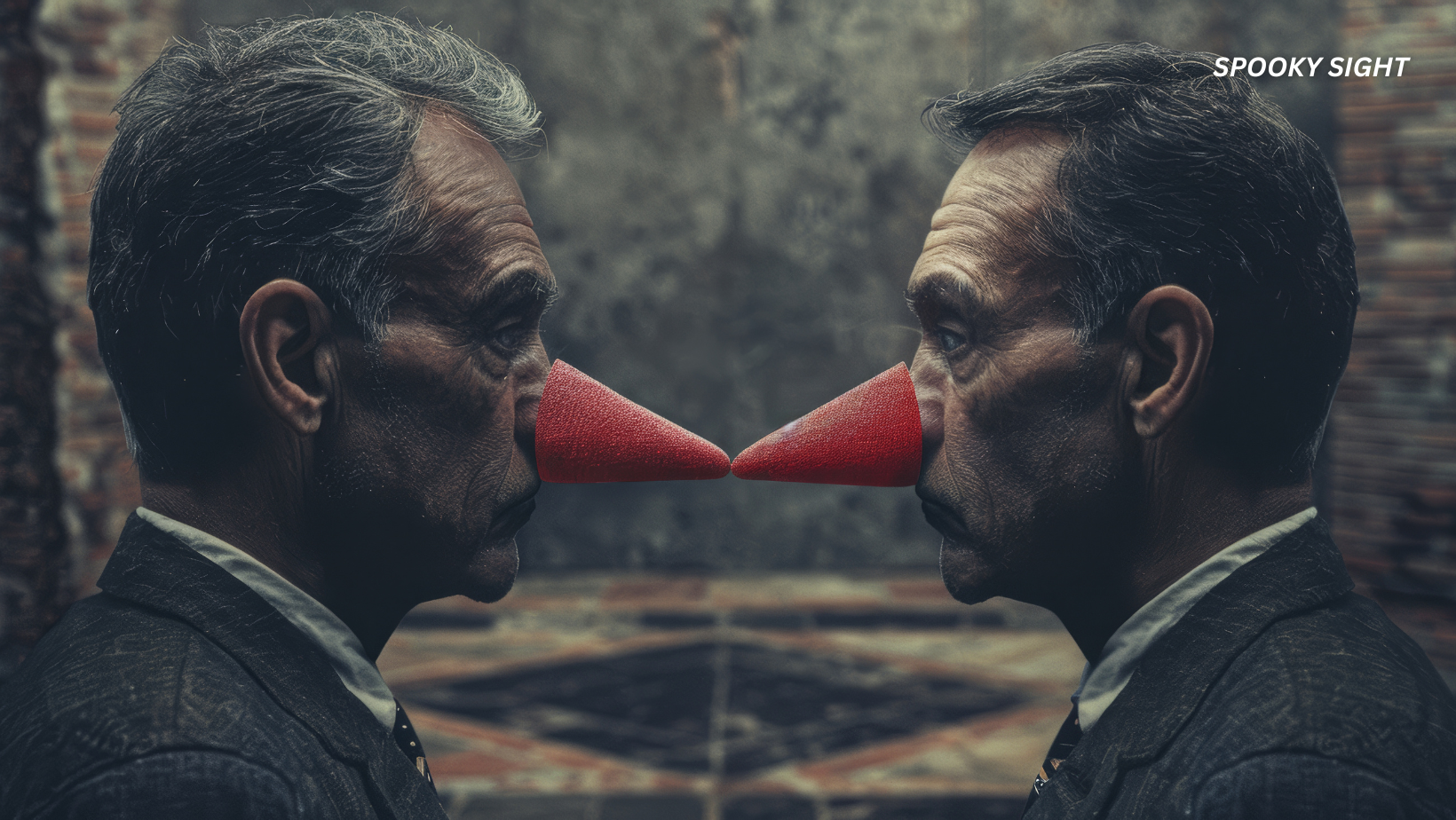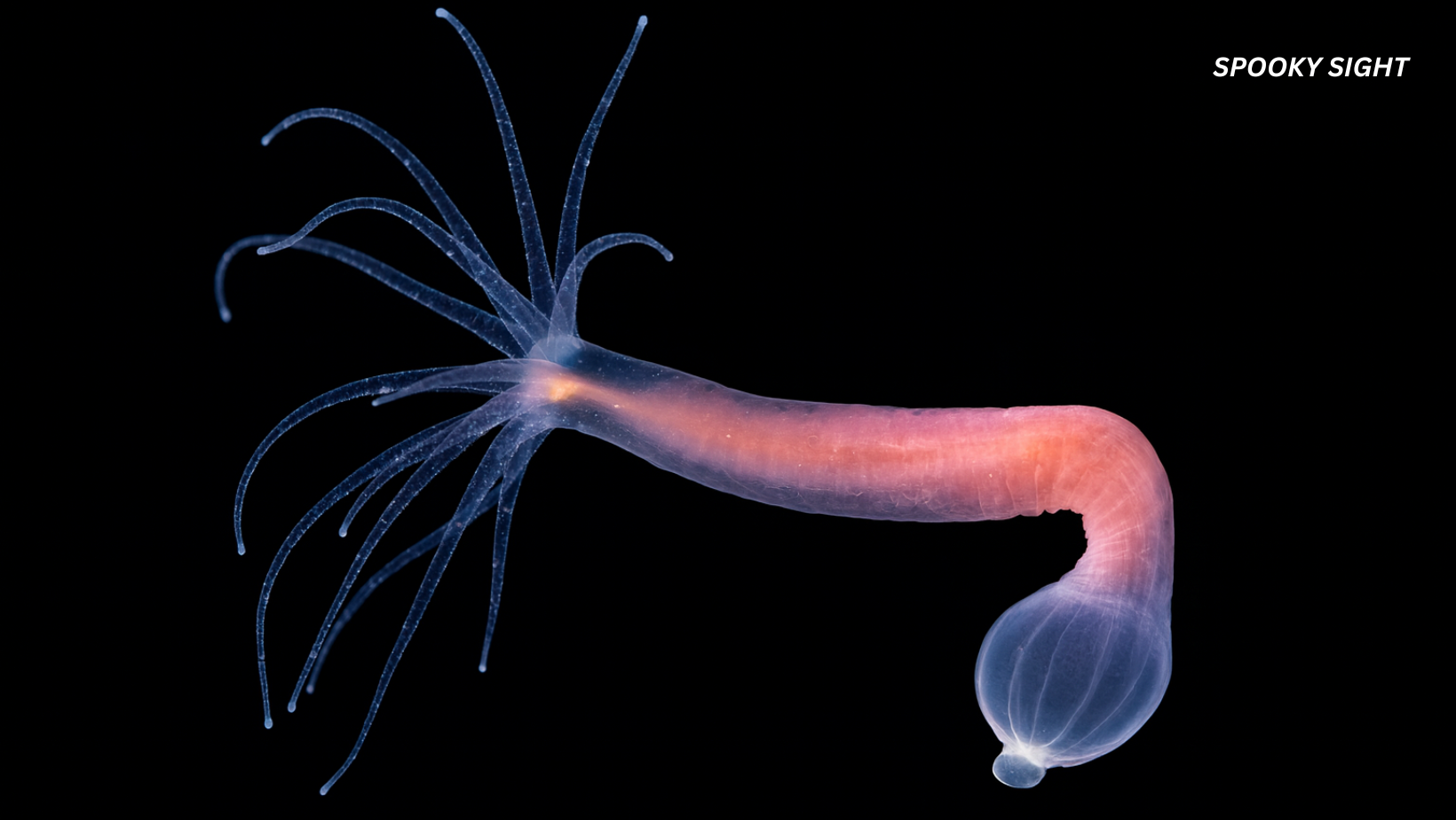When the Romans first arrived in northern Scotland during the first century A.D., they encountered the Highlands inhabited by the Picts, fierce warriors covered from head to toe with elaborate tattoos. The Romans called them the “painted people” due to their distinctive body art.
But what many don’t know about the Picts is that they were pretty passionate about… animals. In fact, they left hundreds of carved standing stones, some of which can still be seen around Loch Ness.
Most carvings depict real animals. However, there is one notable exception. A mysterious creature with a beak or muzzle, a peculiar head structure resembling a locket or spout, and flippers in place of feet. Unlike anything else.
Some experts think this unusual creature may be a swimming elephant. But its true identity remains uncertain.
This “Pictish beast,” as it’s often called, represents the earliest known hint of a belief that has persisted in the Scottish Highlands for over 1,500 years—that Loch Ness may harbor a mysterious aquatic creature.
A pretty cool fact, right? Well, here are 16 more fascinating facts about the Loch Ness Monster, one of the most enduring mysteries of Scotland.
In this article:

Why Searching for Nessie is Proving So Challenging
Looking for the Loch Ness Monster is no walk in the park. Why? Mainly because of the unique and tricky features of Loch Ness itself. This loch (as the Scots call it) is one of Scotland’s deepest bodies of water, plunging to about 755 feet (230 meters) at its deepest points.
This kind of depth creates a vast, complex underwater environment that’s tough to explore. Plus, the waters of Loch Ness are extremely cold and dark, stained by peat from the surrounding soil, which cuts visibility down to almost nothing.
To make things even worse, the murkiness doesn’t just make it hard to see—it can also cause optical illusions. Spotting something underwater? Forget about it. It’s nearly impossible to see anything more than a few feet in front of you underwater.
Nessie May Not Be the Only Lake Cryptid
Here’s another interesting fact about the Loch Ness Monster. Believe it or not, this European cryptid isn’t the only lake cryptid with a worldwide fanbase.
Over in North America, you’ve got “Champ,” the legendary creature that may inhabit Lake Champlain (at the border of New York, Vermont, and Quebec).
Champ’s story goes way back to 1609 when the French explorer Samuel de Champlain allegedly saw a large, serpent-like creature in the lake.
Much like Nessie, Champ is often described as a reptilian being with humps or a long neck. And just like Loch Ness, Lake Champlain—with its maximum depth of 400 feet (122 meters) and similarly dark, murky waters—has been the site of numerous sightings over the years.
But Champ isn’t the only other monster in town. There’s also “Ogopogo,” a well-known lake monster said to live in Okanagan Lake in British Columbia, Canada.
Ogopogo is often described as a long, multi-humped beast, with legends dating back to the indigenous Syilx people.
Loch Ness Has Been Home to Alleged Cryptids for Centuries
The legend of strange creatures in Loch Ness is older than you might think. It goes way back, even before the 20th century.
Beyond the famous 6th-century account by Saint Columba, local folklore from the 17th and 18th centuries talks about water horses known as “kelpies.” These are also believed to inhabit the loch.
Related: Tatzelwurm: The Alpine Cryptid You’ve Never Heard Of
These mythical creatures were often depicted as shape-shifters capable of luring humans to a watery doom. Some believe the kelpie legends might have laid the groundwork for today’s Nessie myth.
Nessie Insurance: Just in Case!
Facts about the Loch Ness Monster: Did you know that in 2005, participants in a triathlon that kicked off with a swim in Loch Ness were insured for £1 million each—just in case Nessie decided to make an appearance?
While the odds of a monster attack were slim to none, the insurance policy added a fun twist to the event. Plus, having all your athletes “covered” can’t hurt… right?

A Huge Business
Speaking of money, the Loch Ness Monster isn’t just a cool mystery; it’s also big business for the Scottish Highlands.
How big of a business? Every year, about 565,000 visitors flock to the region, drawn by the legend. This makes Loch Ness one of the top tourist destinations in Scotland.
Nessie-related tourism rakes in about £80 million (around $100 million) every year. This includes revenue from the Loch Ness Centre and Exhibition in Drumnadrochit, scientific investigations, and the rich local ecosystem.
Local businesses—from hotels to tour operators to souvenir shops—have all thrived thanks to the Nessie.
Thermal Inversions and Seiches
Loch Ness is no ordinary lake. It experiences a unique thermal inversion phenomenon, where warmer water sits on top of colder, denser water beneath.
This inversion can create strange wave patterns and even optical illusions. Why is this relevant? Because it could explain some sightings of the Loch Ness Monster.
On calm days, the loch can also experience “seiches”—standing waves that oscillate within the loch. Combined with the thermal inversion, these seiches can produce strange, wave-like motions on the loch’s surface that might easily be mistaken for a large creature moving through the water.

How Old is the Loch Ness Monster?
Facts about the Loch Ness Monster: The first recorded sighting dates all the way back to 565 A.D. when Saint Columba reportedly encountered a giant beast in the River Ness.
If we take this sighting as legit (and assume the creature was fully grown at the time), the Loch Ness Monster would be incredibly ancient.
Related:
- Mongolian Death Worm: Fact or Fiction? Inside the Gobi Desert’s Greatest Mystery
- Top 10 Most Mysterious African Cryptids You Need to Know About
- Is the Flatwoods Monster Real? An In-Depth Investigation of the 1952 Sighting
However, no known animal—especially a big one—can live that long.
For context, the Greenland shark holds the record for the longest-lived vertebrate, with some individuals estimated to be around 400 years old. Even that falls way short of the lifespan needed for a creature like Nessie to have survived since the 6th century.
So, what does this mean? Here are a few possible conclusions:
- Multiple Monsters: If Nessie exists, she must have reproduced. There could be a whole population of similar creatures in the lake. This would imply that sightings over the centuries could be of different individuals.
- Nessie May Be Gone: If there once was a creature in the lake, it might not be around anymore. However, no physical evidence (like remains) has ever been found to support this theory.
- A Fabricated Legend: The most skeptical take is that the Loch Ness Monster legend could be entirely made up. What about the sightings? They are all misinterpretations, hoaxes, or the result of natural phenomena rather than an actual creature.

Loch Ness: A Water Volume Like No Other
Loch Ness holds an incredible 263 billion cubic feet of water, making it the largest body of freshwater by volume in the entire United Kingdom.
To put that in perspective, Loch Ness contains more water than all the lakes in England and Wales combined!
While it might not be the deepest loch in Scotland (that title goes to Loch Morar) or the largest by surface area (Loch Lomond claims that honor), Loch Ness’s immense volume and the mystery surrounding its depths give it a unique distinction.
Facts About the Loch Ness Monster: The Watchers
Facts about the Loch Ness Monster: The first organized search for the mysterious cryptid took place in 1934. Just a year after Nessie made headlines worldwide.
A team of 20 men was hired as “monster watchers” and stationed along the shores of Loch Ness. These guys were paid £2 per day—a pretty decent sum at the time—to keep a sharp eye on the waters, hoping to catch a glimpse of the elusive creature.
While no concrete evidence of Nessie was found during this early search, it kicked off many similar expeditions over the years.
Loch Ness Never Freezes
Despite Scotland’s often brutal winters, Loch Ness never freezes over. The loch’s waters stay at a steady temperature of around 41 degrees Fahrenheit (5 degrees Celsius) year-round.
This consistent, chilly temperature is due to the immense depth and volume of the loch, which allows it to retain heat from the earth’s core and resist freezing even in the coldest months.
Unlike shallower lakes (more susceptible to seasonal temperature changes), Loch Ness stays perpetually cold.
Over 1,140 Sightings and Counting
Facts about the Loch Ness Monster: As of 2024, there have been over 1,154 officially recorded sightings of the Loch Ness Monster.
These sightings are carefully logged and verified by the Official Loch Ness Monster Sightings Register, which tracks verified reports from the public. The first report dates back to 1985.
The website also contains links to webcam images and detailed information about the strange shapes and creatures spotted in the loch.
Among the most passionate believers is Steve Feltham, who holds the Guinness World Record for the “Longest Continuous Vigil for the Loch Ness Monster.”
Steve has camped near Dores and opposite Urquhart Castle. He has been searching for Nessie full-time since 1991, dedicating his life to uncovering the truth behind the legend.
Royal Interest: Prince Philip and the Search for Nessie
Facts about the Loch Ness Monster: According to documents from the Natural History Museum, Prince Philip, Duke of Edinburgh, had such a strong interest in the Loch Ness Monster that in the 1960s, he considered enlisting the Royal Navy to help search for the cryptid.
In fact, Prince Philip’s fascination with cryptozoology and the mystery of Nessie was no secret. He was even in contact with a number of researchers and enthusiasts investigating the alleged sightings around the lake.

The “Surgeon’s Photograph”
The Surgeon’s Photograph (1934) is perhaps the most iconic image of the Loch Ness Monster. And one of the most convoluted hoaxes ever.
So, what happened?
Dr. Robert Kenneth Wilson (a respected London physician) sold to Daily Mail (a British tabloid) a photo he claimed was the undeniable evidence of Nessie’s existence (see the image above).
The tabloid published the photo, but it was nothing but a blurry image of what appears to be the head and neck of a large creature emerging from the loch.
As you can imagine, the article generated a lot of interest. A bunch of “experts” even came forward saying that the Surgeon’s Photograph is clear evidence and no one can deny that the legends are real.
But guess what? 60 years later, in 1994, the truth was revealed when Christopher Spurling confessed that the image was a hoax.
The “monster” in the photograph was actually a tiny model of a creature’s neck placed on a toy submarine. Everything was planned in detail. Even Dr. Wilson had been chosen to present the photo due to his respectable status as a physician, making it more believable to the public.
And we are not done. “Who is this Christopher Spurling?” you may ask. In a “funny coincidence,” Spurling is the stepson of Marmaduke Wetherell (a British actor and filmmaker hired by the same Daily Mail in the 1930s to look for proof that Nessie is real).
During his investigation, Wetherell claimed to have found large footprints near Loch Ness, which he believed to be evidence of the monster. However, these footprints were later revealed to be… a hoax.
Wetherell was publicly humiliated and ridiculed, and his career took a big hit. So, what did he do? He orchestrated another hoax—the famous “Surgeon’s Photograph.” I mean, why not go all in at this point, right?

Unexplained Sonar Contact
Facts about the Loch Ness Monster: In August 2011, a boat captain named Marcus Atkinson recorded sonar images of a large, unidentified object moving about 75 feet (23 meters) below his boat in Loch Ness.
The object appeared roughly 5 feet (1.5 meters) wide and was tracked for several minutes as it moved steadily. The sonar contact, dubbed the “Loch Ness Anomaly,” has remained unexplained.
Some skeptics suggest it could have been a large fish or underwater debris. However, the sonar image has reignited interest in the possibility of a large, unknown creature inhabiting Loch Ness.
The Largest Nessie Search in Half a Century
In August 2023, the Loch Ness Centre in Drumnadrochit and the volunteer research group Loch Ness Exploration organized the most extensive search for the Loch Ness Monster in 50 years.
This ambitious effort used cutting-edge technologies, including thermal drones, infrared cameras, and hydrophones, to scour the loch’s depths.
While the search didn’t uncover definitive evidence of Nessie, it did capture a mysterious underwater noise described as “unlike any other” previously recorded in Loch Ness.

Nessie on Apple Maps?
Facts about the Loch Ness Monster: A mysterious fish-like shape was spotted beneath the waters of Loch Ness on Apple Maps, sparking speculation that it could be Nessie herself. (see the image above)
However, experts in computer mapping were quick to debunk the theory.
They explained that the image likely shows the wake of a boat removed by the algorithm responsible for stitching together satellite images, creating the illusion of a large underwater creature.







